When you really think about it, you spend a lot of time brushing your teeth. If you brush your teeth twice a day for two minutes each time, you will spend over 1400 minutes brushing in a year’s time. A 2003 poll asked respondents which invention they could not live without. An overwhelming amount of respondents stated that they could not live without a toothbrush. For something so integral to our daily routines, many of us don’t know how much teeth cleaning methods have improved over the years. Dr. Brad Greenfield and our staff at Lake Orion Family Dentistry have posted some interesting toothbrush facts below.
The History of the Toothbrush
- Around 3500 B.C. Ancient Babylonians used “chewing sticks” to clean their teeth. These chewing sticks were basically like a large toothpick. Ancient Babylonians preferred sticks from certain trees because they noticed it improved the smell of their breath.
- Archeologists and anthropologists believe that the first version of a toothbrush appeared in China during the Middle Ages. This early form of a toothbrush was composed of hair from a hog’s neck attached to a bamboo stick. The hog’s hair served as bristles.
- Monks in Chinese monastic communities favored ox bone to bamboo and horse hair to hog’s hair.
- Mass production of the modern toothbrush occurred in England around 1780.
Interestingly, most Americans didn’t brush their teeth before World War II. In fact, the majority of our population did not practice good oral hygiene on a regular basis. However, United States soldiers were required by the military to brush their teeth daily during the war. When these soldiers returned from overseas, they brought their good oral hygiene habits with them. Daily oral hygiene quickly caught on amongst civilians.
Despite the importance brushing your teeth, you still need a dental cleaning every six months. If it’s been a while since your last cleaning, contact our Lake Orion dentist office at (248) 693-6213. We serve patients from Lake Orion, Rochester Hills, Oxford, Clarkston, and the neighboring communities.









